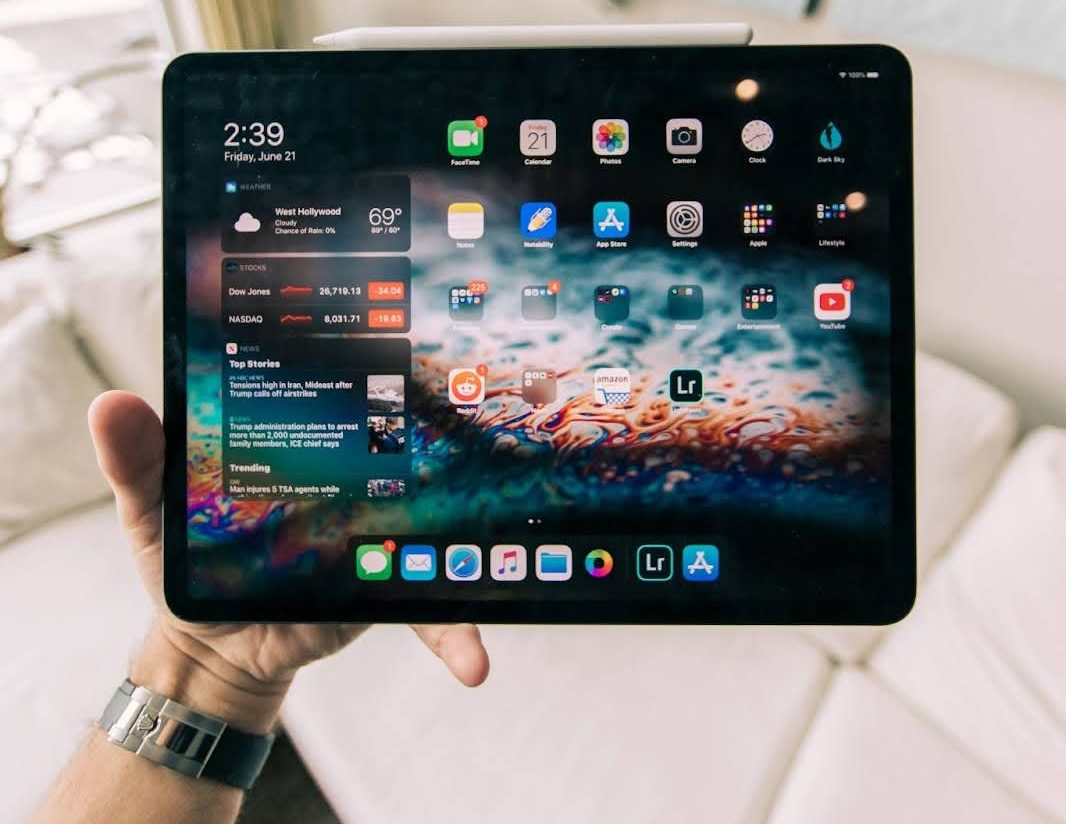Measuring Success: Why Output Matters More Than Input

Ever since a jeweler in New York first came up with a “time recorder” in 1888, time has been seen as a measurable resource. As the traditional way of monitoring hours employees spent working, it recorded attendance and helped calculate pay (and still does).
Somewhere along the way, however, time spent working has morphed itself into something companies and managers use to measure success with. But is this the best approach?
When it comes to determining workplace success, we often think about the input—how hard we worked, how long a project took to complete, and how much effort we put in.
The truth is, the results and quality of our work is far more important. While time tracking can be useful in evaluating work performance and success, excellent and effective results of our work are what really matters. After all, efforts do not define success—striving for and accomplishing meaningful goals in mindful and productive ways do.
Here we’ll explore how a simple clock in/out system can be detrimental to creative and knowledge work, resulting in decreased workplace motivation, productivity, and employee engagement. We’d cover why goals and outcomes should be prioritized, allowing teams to concentrate on output and yield greater value. Focusing on goals and outcomes instead of simply tracking time investment leads to greater value and productivity, and provides managers with the ability to identify areas of improvement and success.
The Downsides of Time Tracking
Time tracking refers to the practice of measuring how much time one spends working. Used to measure productivity, the “punch-in, punch-out” approach holds workers accountable to their working hours. While it can be helpful in some situations, focusing too much on time spent rather than output can have some serious drawbacks.
What Is Time Tracking?
Time tracking ensures employees are staying on task and working efficiently. In theory, time tracking maximizes productivity by decreasing multi-tasking, and makes sure projects are completed in a timely manner thanks to increased accountability.
Time tracking is just one of the various types of employee monitoring metrics used by organizations today. By capturing detailed information about employee activities, businesses can better analyze their workflow and make adjustments accordingly. Thanks to remote time tracking software and other digital tools, managers can evaluate the productivity of each employee (including those that work remotely), thus helping to identify potential problems and solutions to inefficient workflow.
Time tracking can take many different forms, such as manual time tracking that involves the employee writing down their hours themselves, or computerized time tracking that keeps a log of how long an employee has been logged into a company’s project management system, and what work has been produced during that time.
Drawbacks of Time Tracking
Excessive time tracking can become overwhelming and stressful, however—not to mention costly for the organization. Employees may become discouraged when they don’t meet their daily goals in the allotted amount of time, and feel like they’re constantly behind—even if they’ve got the same output.
Moreover, some employees may be tempted to pad their timesheets and exaggerate their hours. Gallup’s 2022 Workplace Report shows that only about 21% of the global workforce are actively engaged at work, while employee stress reached an all-time high of 44%.
Employers who rely heavily on time tracking may be seen as micromanaging, as workers feel like they’re being constantly spied on while at work. Overmonitoring may lead to a breach in trust between organizational leaders and the people who are actually producing the work.
To make things worse, the time tracking approach can become too rigid and inflexible. Creative processes don’t always adhere to a strict timeline, and workers whose jobs involve creative processes may not be able to produce their best work within the confines of a strict time schedule.
Other drawbacks of time tracking include:
- It encourages employees to prioritize time over output: When you focus solely on the time spent, you may miss out on important quality metrics. This can lead to employees prioritizing time, rather than the quality of the work they produce.
- It doesn’t account for breaks and distractions: Time tracking doesn’t factor in when employees take breaks or get distracted by other tasks. This results in an inaccurate evaluation of the employee’s performance and productivity.
- It’s prone to overuse: Frequent time tracking can lead to employee burnout and low morale. A feeling of being forced into a box easily leads to decreased productivity for both managers and employees alike.
As 2017 research from Baylor University shows, monitoring software is related to tension and decreased job satisfaction in the workplace, including higher turnover rates. A 2019 survey from a university in Finland reflects this: while employee monitoring such as time tracking may increase productivity in the short-term, employees were less willing to go the extra mile or reach for excellence in their work if they knew they were being monitored.
Employees simply putting in required hours to get through another workday leads to mediocre knowledge work and creative work. Quality, after all, isn’t the point; task completion when the deadline hits is. By removing the “work” from the “results”, time tracking can lead to decreased productivity, motivation and employee engagement as time goes on.
As co-founder of Basecamp David Heinemeier Hansson told Fast Company in 2020, “The whole premise of employment is to produce or service something. it’s not to sit around and look busy.”
The Importance of Goals and Outcomes
Rather than relying solely on time tracking, why not shift to focusing on goals and outcomes?
Employers who set clear, attainable goals incentivize employees to do the best possible work. This encourages workers to focus on the quality of their work, instead of how much time they’ve spent working. Better yet, when a team has a shared understanding of, and motivation towards achieving success (however that might look for the team), productivity and engagement comes about as a natural by-product.
By placing the emphasis on the quality of the work instead of how or when the work gets done, the employee becomes more engaged in the work, increasing both value and productivity in the short- and long-term.
With this mindset, we’re shining the spotlight on work performance instead of effort, driving actual production and creativity instead of meeting a certain time quota.
Outcome Highlights Performance, Not Input
Outcome tracking provides employers with a more complete picture of employee performance metrics, as it takes into account work quality and efficiency, in addition to how long the tasks took to complete. This allows employers to identify and reward employees making valuable contributions to the organization, rather than simply measuring how long the employee worked on a task.
Goals-tracking may also aid in promoting a more engaging work environment. With outcome-based tracking, employers are incentivizing employees to think critically and take initiative, as workers know that their performance will be rewarded. This rewards system encourages employees to be more creative and take more risks with their work, leading to positive results and potential breakthroughs that benefit everyone in the long run.
By tracking outcomes instead of time, managers can gain an insight into how employees are executing projects, not just when and for how long. With clear and fair progress-tracking and work performance assessment that goes beyond the clock, project managers can identify areas of improvement and success in their employees’ work and provide effective guidance and feedback. This can lead to better overall performance and productivity, as well as improved morale and job satisfaction for employees.
How Focusing on Goals Can Increase Productivity
Focusing on the quality of output rather than the length of time it takes to produce it can lead to increased productivity in the workplace. By incentivizing employees to focus on the end result rather than the time it takes to get there, employers can encourage employees to perform at their best.
Results-driven workplaces experience reduced stress and burnout in the workplace. Employees who no longer need to worry about hitting a certain number of hours in a day or week are freed to focus on producing quality work. Corresponding increases in morale and job satisfaction can lead to better work performance and productivity.
With outcome-based tracking, managers can be more flexible with how projects are completed, enabling workers who practice creative processes to be more independent and productive.
As an example, this study suggests that flexible working hours that address and complement the needs and preferences of employees may well result in an overall growth in organizational productivity and efficiency.
Motivation, Ownership, and Engagement Matters
Increased workplace motivation, ownership and engagement among employees is a natural by-product of clear objectives and measurable milestones to work towards.
When employees have achievable goals to reach, they will be more motivated to complete their projects, as they have something to strive for. As employees become more invested in the projects they are working on, their engagement levels rise, especially when they have a better understanding of how their work fits into the company’s overall objectives.
As reflected in a 2020 Gallup poll, flexible and remote working results in increased employee engagement. This positive correlation reflects better physical and mental health for employees, and 40% fewer defects in quality, and 41% lower absenteeism—resulting in a significant boost in company profitability.
Fostering a goal-oriented work environment can lead to improved performance and productivity, as employees strive to reach their goals and will be more motivated to do their best.
Tracking Improvements Instead of Hours
Outcome tracking can enable managers to identify areas of improvement and success in their employee’s work by providing them with information about how efficiently and effectively employees are completing tasks.
Performance metrics give managers a big-picture perspective into the quality and efficiency of employee work, as well as the progress they are making on tasks.
Time tracking metrics, on the other hand, simply show how much time has been invested in a project, which isn’t that helpful in helping managers identify any inefficient processes or mistakes in their employee’s work, or areas where an employee is making valuable contributions to the organization and rewarding their quality output.
Output Tracking in Practice
Output tracking can be implemented in many different ways.
Spotify’s Results-Oriented Model
Spotify is an excellent example of a company that has moved from time tracking to output tracking. In the center of this shift is the realization that agility and autonomy is what frees up employees to explore and innovate.
Spotify’s hierarchical structure isn’t exactly hierarchical: while there are team managers that lead teams, each employee is connected to coaches and guilds that mentor them and support them from project to project, even if it involves switching teams.
In addition to investing directly into the skillsets and abilities of the employees, the freedom to make decisions and implement them without having to climb through a mountain of organizational redtape results in increased motivation and ownership among Spotify employees, as well as improved morale and job satisfaction.
How Amazon Measures Employee Success
Amazon’s results-based approach works as a collaborative effort across teams in order to prioritize high-impact projects, while encouraging employees to think of new ways to improve their services through experimentation.
Ex-Amazon entrepreneur Nick Dimitrov shares that within Amazon, “output” means the results you achieve, while “input” is the effort you put in to achieve those results. Bluntly stated, no one cares how hard you’re worked or how many hours you’ve stayed overtime. The results are what matters, and are what you’re going to be rewarded by. This makes the company culture apolitical; the better your output by year’s end, the more stocks you will receive.
The emphasis on both short-term wins and long-term output also drive engagement, as each employee’s results (however small, as long as it is relevant to the company) are acknowledged and rewarded. Small wins are just as important as big ones, and keep this in mind—there are no punishments for failing.
How can outcome tracking be implemented in a company?
Outcome tracking can be implemented in a company by first setting measurable objectives and goals, and then providing employees with the resources they need to achieve said objectives.
It’s really that simple, but let’s break it down even more.
- By laying out clear, S.M.A.R.T. goals, managers can ensure that employees have achievable targets to work towards. Setting specific metrics that are meaningful to the overall purpose of the organization, and that are attainable for those working on the project, is key.
- Open and empathic communication that recognizes and treats employees as human beings and not just workers is another crucial part of mindful, productive performance tracking. Allowing for two-way conversations, leading with empathy, and making sure each team member is heard and feels appreciated goes a long way toward increasing the quality and quantity of work produced.
- Constant check-ins are usually unnecessary, almost always time-wasting, and definitely annoying. By allowing employees to work on projects without a head always peering over their shoulder removes the tension and pressure of having to deal with a micromanaging boss.
By tracking outcomes, managers can ensure that individual work performance is directly linked to the company’s success, thus incentivizing employees to do their best.
Output-Oriented Tracking: Benefits for Companies, Employees, and Managers
When individual performance is directly linked to the company’s success, which can increase productivity and efficiency as employees strive to exceed expectations.
Outcome tracking also allows managers to identify areas of improvement and provide guidance and feedback to employees in order to help them improve their performance. This can help employees develop their skills and knowledge, and better contribute to the overall objectives of the company. For managers, outcome tracking can provide an insight into their team’s work performance, as well as identify areas of success, allowing them to reward and acknowledge employees for their valuable contributions. By tracking individual outcomes rather than time, companies can ensure that their employees are working to their best ability, while also providing the tools they need to achieve their objectives.
Still not convinced? Here’s a quick run-down of the major benefits to output-oriented tracking:
- Increased productivity, efficiency, and better performance across the board, from the newest employee to seasoned managers
- Improved morale and job satisfaction company-wide, thanks to higher levels of ownership and employee engagement
- Better insight into employee performance metrics, allowing for effective guidance and feedback in order to help improve work performance.
A Potential Pitfall
Output tracking isn’t all roses and cream, however. A results-driven workplace culture that ditches the time-tracking approach may lead to a toxic culture of overtime, which in turn feeds into employee workaholism and burnout.
It can be tricky to hit the perfect balance between encouraging high-quality work while also discouraging overwork and burnout.
That’s why we’ve created Freedom.
Solutions: Freedom for Teams
Instead of tracking time, why not rescue the time you and your team already spends at work, and make sure it’s spent as productively as possible?
Freedom for Teams is a distraction-blocking platform designed to help teams focus on creating quality work that matters by turning off the Internet’s irrelevant noise.
Removing Distractions, Increasing Productivity
Freedom for Teams includes distraction-removing, web-blocking software that helps to increase focus and productivity.
The software blocks distracting websites, such as social media, streaming services, and even email. The software also has the ability to block or limit access to certain websites for specific times of the day or for specific time periods, enabling deep work sessions that tap into each employee’s best capabilities.
This helps teams to remain focused on their tasks and eliminates any potential distractions that can lead to lost time and decreased productivity. The web-blocking software also helps teams to stay on task and complete their tasks more quickly, allowing them to achieve their objectives more quickly and efficiently.
On an economic level, distraction costs companies an average of $10,375 per employee per year, according to this survey. Not only is distraction a financial sinkhole, it also lowers individual and team focus and productivity, encouraging bad workplace habits such as multitasking.
Freedom for Managers
On top of distraction management, Freedom for Teams comes with a customizable, built-in schedule that allows you to start focus team sessions on the fly, or set up recurring sessions. Freedom supports Mac, Windows, Android, iOS, and Chrome, making it simple and easy to connect with your team over different devices and operating systems. The coolest feature yet? Treat yourself and your team to Focus Sounds, Freedom’s library of ambient music that helps build focus and flow. (For any questions you might have, be sure to check out our FAQ page for teams!)
Final Thoughts: A New Approach to Workplace Productivity
We’ve taken a detailed look at how to measure employee productivity, but for you and your team, it’s just the beginning. Outcome tracking is a vital tool for managers, as it is essential for providing insight into the work performance and progress of their team. With the right tools to support a results-based approach, teams can focus on the end results, rather than the time spent in front of the screen.
By utilizing tools like Freedom for Teams, your team can achieve workplace objectives more quickly and efficiently, leading to greater overall value and productivity for the company.
So, how do you measure employee success?


